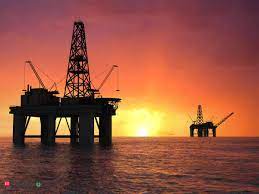Methane emissions account for roughly 25 percent of current global warming and contribute to climate-related threats including more intense and frequent heat waves and flooding, food insecurity, and poor air quality. According to Malaysia’s third biennial update report to the United Nations, methane emissions contributed 17 percent of greenhouse gas emissions in 2016, with its major source being fugitive emissions from the oil and gas industry.
“Malaysia’s biggest opportunities for tackling methane emissions lie in the oil and gas sector,” said Ir. Gurmit Singh, Chairman, Centre for Environment, Technology and Development Malaysia (CETDEM). “It is ‘low-hanging fruit’ when it comes to addressing climate change, in line with Malaysia’s goals of reaching net zero carbon emissions by 2050,” he added.
A highly potent greenhouse gas (GHG), methane (CH4) traps 80 times more heat in the atmosphere than carbon dioxide (CO2) over a 20-year period. Even though CO2 has a longer-lasting effect, methane sets the pace for warming in the near term. Carbon dioxide in the atmosphere determines how much the planet will warm, but methane controls how quickly we get there. If methane gas release is stopped, the atmosphere responds quickly to reductions, and the impact on warming will begin to resolve within a decade. Getting methane emissions under control is critical to keeping warming below 1.5 degrees.
Methane is the main component of natural gas, making it a valuable commodity, especially in today’s energy markets. However, methane pollution remains a concern, with the oil and gas industry identified as the world’s largest source of methane pollution. In Malaysia, companies are already starting to set net-zero targets and addressing methane is the first – and cheapest – step on the path to net zero. Furthermore, cutting methane emissions from the oil and gas sector also makes economic sense as methane mitigation offers significant business opportunities.
Most of the solutions to methane mitigation in the oil and gas industry are readily available and cost-effective. Emissions reduction would be achieved through, among others, zero continuous flaring and venting in all operations for fugitive emissions, continuous improvement in operations and plant efficiency in natural gas transformation by optimising fuel consumption; and enhanced improvement in plant efficiency of oil refining industries by optimising fuel consumption.
On the global climate front, the Environmental Defense Fund (EDF) has led scientific efforts that focused the world’s attention on the importance of reducing methane. EDF’s Energy Transition Director, Dr. Shareen Yawanarajah said: “Today we have much better data on where methane is coming from, how much is released into the atmosphere and how to prevent it. With major energy security and supply risks worldwide, minimising wasted energy and revenue by eliminating unnecessary flaring and venting would provide an additional 53 billion cubic metres (bcm) of natural gas to global markets. Thus, the benefits are both economic and social.”
EDF and CETDEM organised a panel discussion titled “Methane Reduction on The Road to Decarbonisation” at the International Greentech & Eco Products Exhibition & Conference Malaysia (IGEM 2022) at Kuala Lumpur Convention Centre, on Oct 12.
The international panel consisted of Mr. Hasnor Hassaruddin Hashim from PETRONAS, Ms Katherine Jerigan from the US Embassy in Malaysia, Mr. Matt Watson from EDF and Mr. Ryan Baerg from the Canadian High Commission to Malaysia. The panel discussed methane reduction strategies in line with Malaysia’s goals of reaching net zero carbon emissions by 2050, global efforts to reduce methane, and updates on financial and technical international support underway, such as the Global Methane Pledge, the International Methane Emissions Observatory, the Global Methane Hub, and the Global Methane Energy Pathway.









